|
photo page 50 |
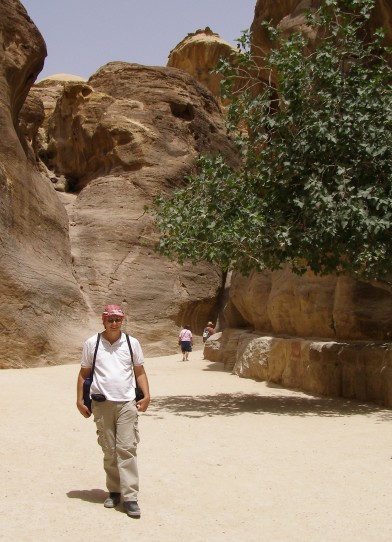
Hey, where does that funny arab hail from?
|
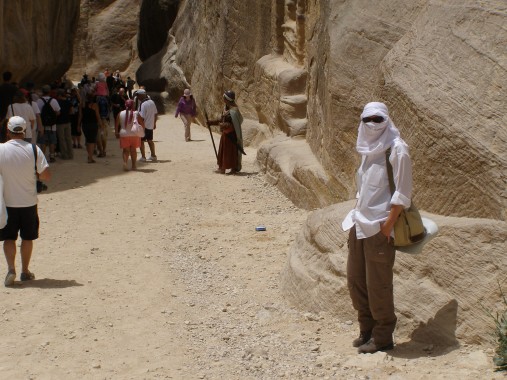
And there is another one, with Sonja's bag......
|

Goodbye? Crown? Jordanian flag?
|

Sonja side by side with Abdullah the second?
|
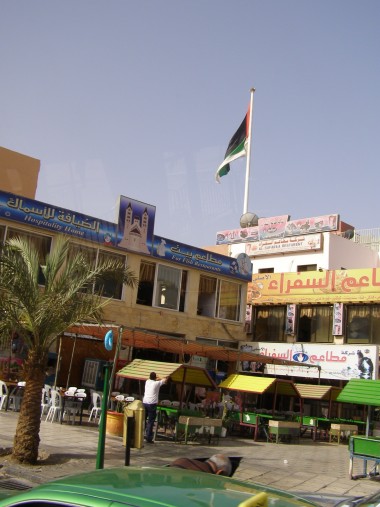
We are visiting our neighbours from across the sea, driving past the gigantic flag in Aqaba, Jordan.
|
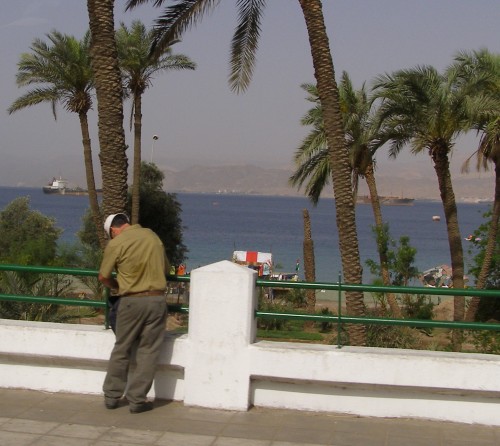
Funny seeing Eilat from the other side.
We are on our way to visit Petra, the world famous rock-hewn capital of the
Nabataeans. All these years in Israel we have postponed this trip because of the extra hassle it gives at the airport security checks,
but since we are here for the last time, we decided to go for it. The trip to Petra takes almost 2 hours and had several surprises for
us: the fabulous infrastructure of 3 lane highways virtually without traffic, a railway we did not know was there, English road signs,
and lots and lots of speed bumps, even smack-bang on the highway in the middle of the desert.
|
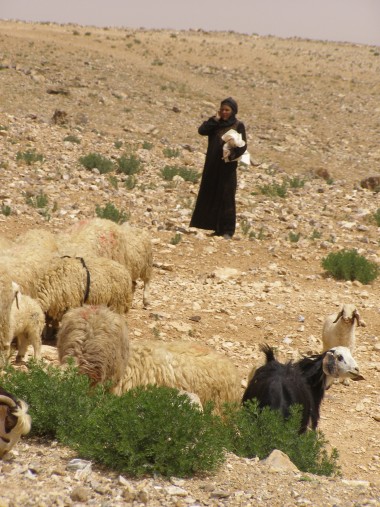
After an hour on the highway, the bus veers off onto a narrow mountain road, higher and higher, with lots of bends and up-and-downs.
If we would encounter snow here at this altitude, there would be no way the bus would ever get through. But this is April, cham sing,
and sweltering hot. Suddenly the bus comes to an abrupt stop: two shepherdesses cross the road with their herd of goats. While one
is watching (or making a phone call) the other furiously swears and shakes her fist at us. Couleur locale?
|
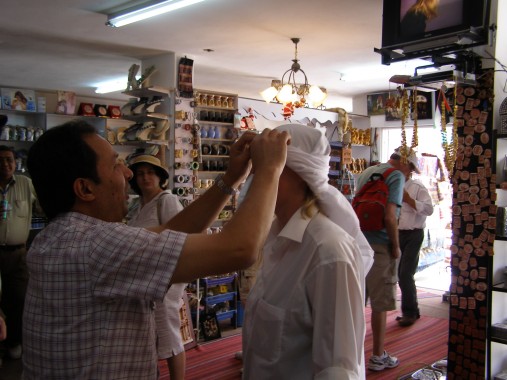
The guide advises us to have good head, mouth and nose covering for the heat and the dust. He makes a toilet break at a shop, where
they conveniently and not coincidentally sell keffiyehs: the traditional head scarves. We follow his advice, and the shop owner
helps with the knots.
|
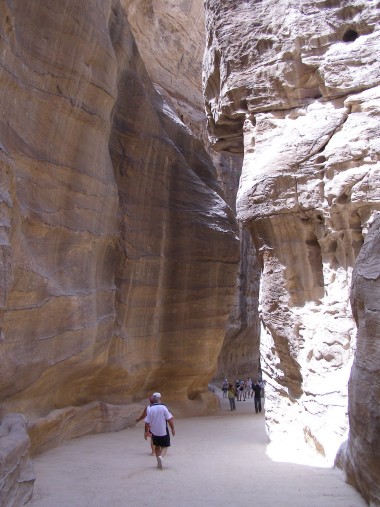
Good advice indeed, for it is almost a kilometer to walk from the parking lot, and next to the dusty foot path is an even more dusty
path for horses, donkeys and carriages. This path is followed by a narrow gorge of 1.5 kilometer, where high walls provide shade.
The walls show several rock-hewn figures and shrines, and a water conduit about a meter from the ground, all the way along
the gorge.
|
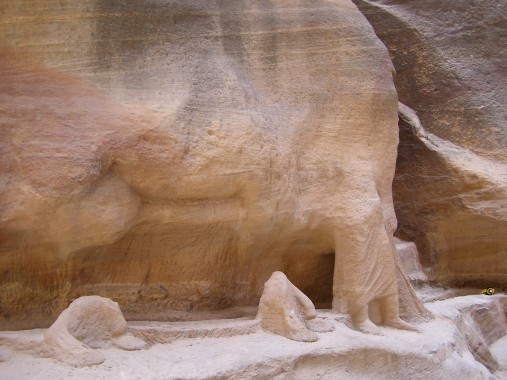
The water conduit even passes through a "camel".
|
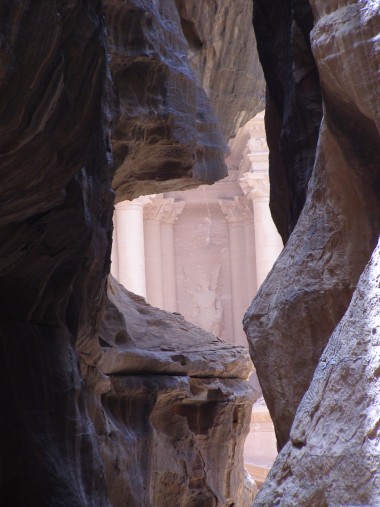
Finally, giant rock carvings appear at the end of the gorge.
|

Wow, gigantic indeed, and cut straight out of the mountain side. Beautiful hacking, and over 2000 years old!
|
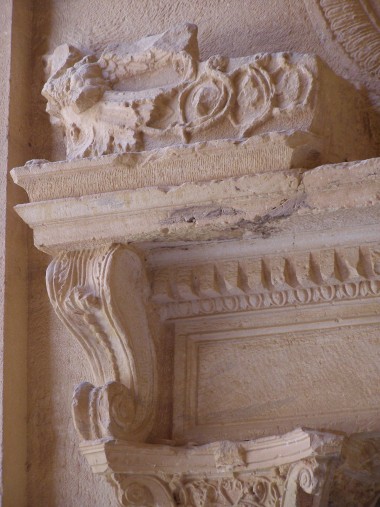
Details of the cuttings.
|
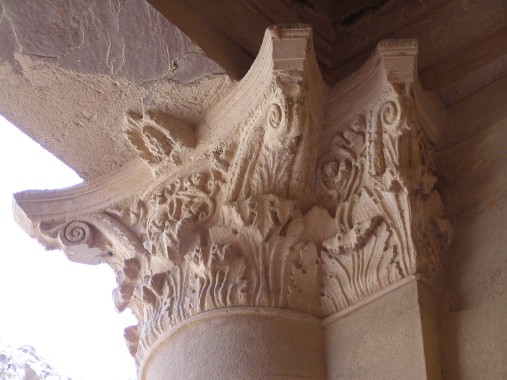
Imagine chopping off the wrong piece: can you do this again please?
|
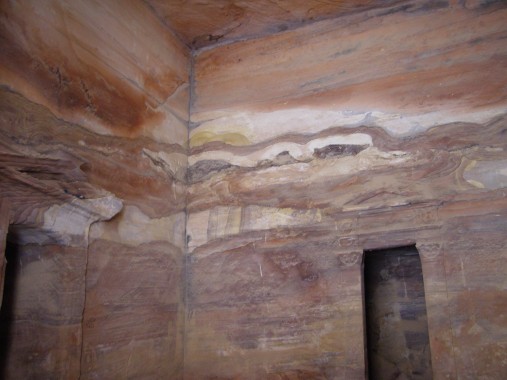
The rock is layered with bright colors. The main entrance allows a view into the colorful first room, and two more rooms are present beyond
this one, but not accessible for the general public. This building is called the Treasury, because it was originally thought to be a storage
for an Egyptian Pharaoh, but turned out to be a burial site for the Nabataeans.
|
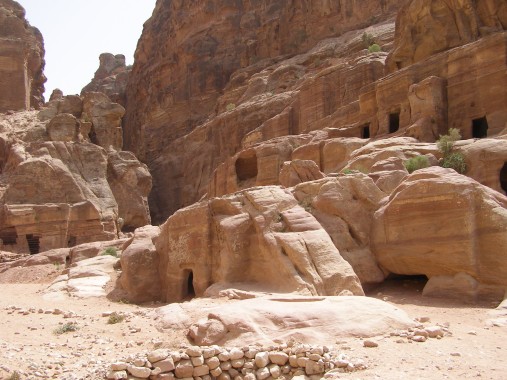
The area of the rock monuments is much bigger than we expected, and we walk for almost half an hour through the valley with both
Nabataean burial sites and Roman amphitheaters and cardo.
|
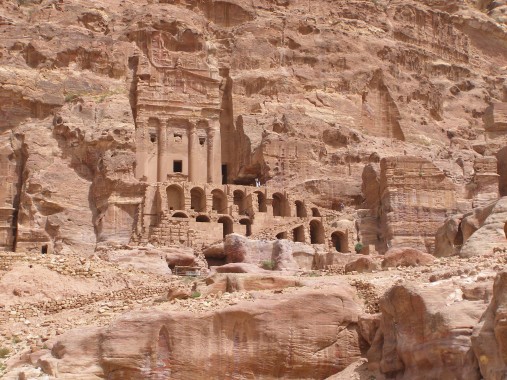
The Nabataean imitated various building styles, like Greek and Roman.
|
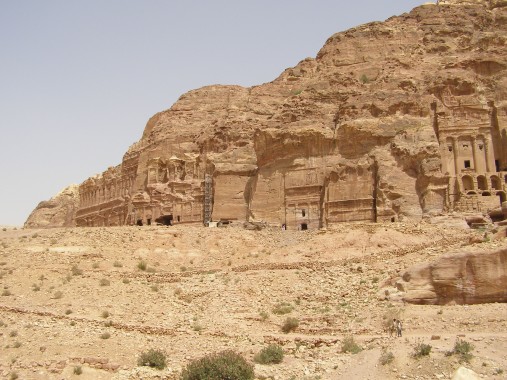
|
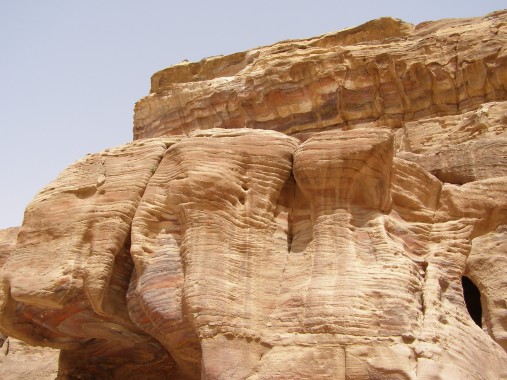
At several places along the valley, the same layered rock as in the Treasury is found.
|
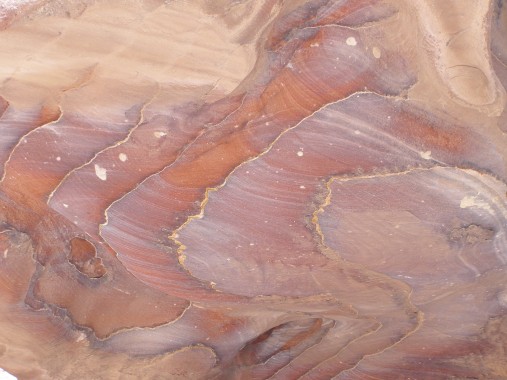
Cut off and polished, it gives a wonderful color pattern.
|
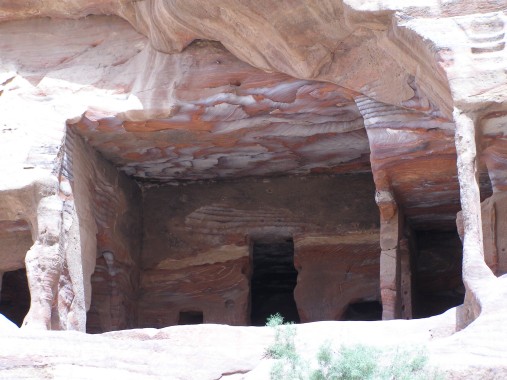
Nice decorative ceiling: no whitewashing or wall papering required!
|
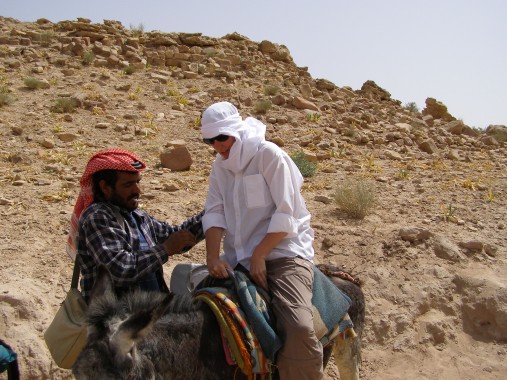
Down in the valley we take the easy way up.
|
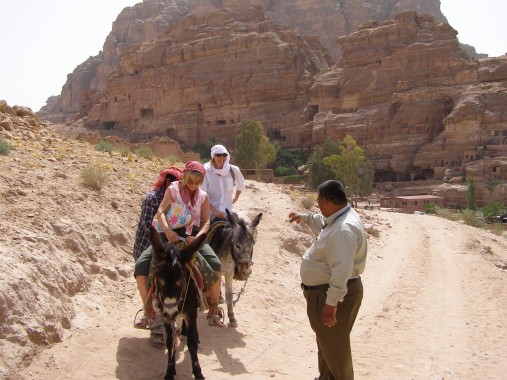
In fact we and Stephen & Lynda from Jersey had paid our portly guide for horse carriages, but they were all in use and not available.
We could not really regret that, because of moral dilemmas: the horses looked quite a bit under the weather, skinny and wounded, despite
the terrific works of the local
Brooke hospital for animals. However, these donkeys looked healthy and OK.
|

A nice alternative: riding the donkeys up the hill to the village, and then by taxi to the bus parking. Our horse riding instructor Ton Ullings
would have been (somewhat) proud of us!
|



